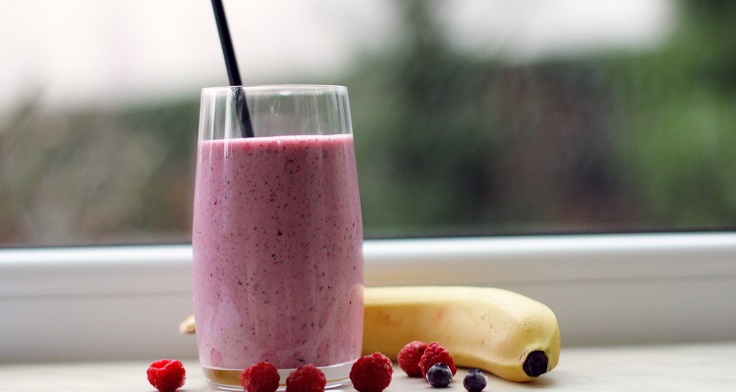
Nothing is quite as refreshing in the summer as an ice-cold smoothie. Remember, smoothie-making is not an exact science. Use these ratios as a guide and adjust them according to your tastes. It may take a few tries to perfect it, but it will be worth it!
- Make sure your fruit-to-liquid ratio approaches 1 to 1 or 1 to 2. You want more liquid than solids in your blender.
- If your blender is struggling to mix, turn it off and add more liquid before continuing.
- Start blending at low speed, increase to high, and finish at low.
BASIC FORMULA
1 to 1 1/2 cups liquid + 1 to 2 cups frozen fruit + one handful greens + 1 to 2 tablespoons add-ins
Step 1: Choose Your Base
The amount of liquid will ultimately depend on how thick you like your smoothie.
- Water, coconut water, or green tea
- Unsweetened dairy-free or low-fat milk of choice
- OPTIONAL: ½ cup low-fat yogurt adds a boost of protein and creaminess — but pair it with one of the liquids above so that your smoothie blends well.
Step 2: Choose Your Frozen Fruit
Mango and pineapple are a delightfully tropical combo. Mixed berries pair nicely with a handful of spinach. Start with one cup of frozen fruit and work up to two cups for a thicker smoothie.
- Strawberries, blueberries, raspberries, or blackberries
- Cherries
- Peaches
- Mango
- Pineapple
- Banana
Step 3: Get Your Greens
Add a generous handful of spinach, kale, or arugula — any leafy green (fresh or frozen) will do.
Step 4: Add a Nutritional Boost
Add 1 to 2 tablespoons of the following for a boost of healthy fats or fiber:
- Avocado
- Nut butter
- Rolled oats
- Chia, hemp seeds, or flaxseeds
Step 5: Add Flavor
Just a dash of the following can bring the flavors alive. Note: If your smoothie contains frozen banana, you will likely not need to add a sweetener.
- Honey or pure maple syrup, to sweeten
- One pitted Medjool date to sweeten
- Freshly grated ginger
- Vanilla extract
- Lemon or lime zest or juice
- Cinnamon
Step 6: Pour and Enjoy!
